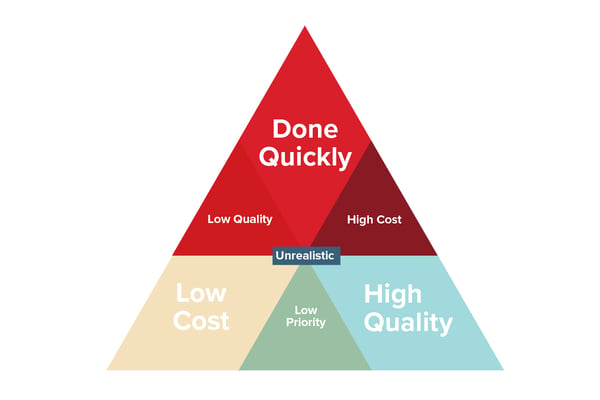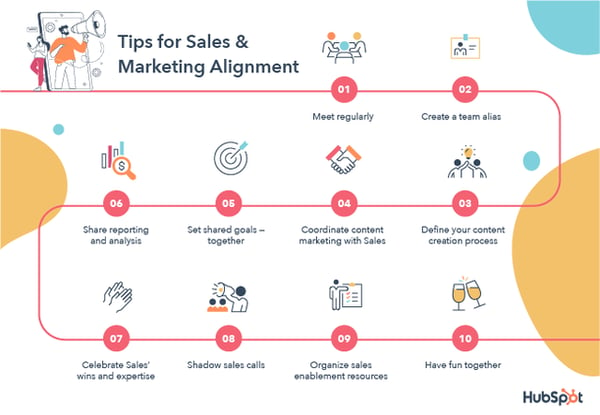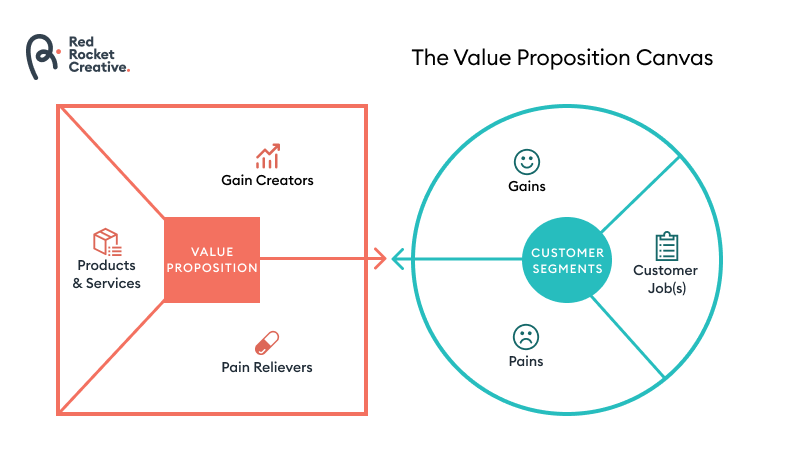You might be familiar with all the points on this list, but it's still easy to fall into common traps despite this knowledge. Marketing success is all about attention to detail.
In this article, we share 10 crucial things that marketing managers often miss. From goal-setting to content execution, learn from 20 years of agency experience and take your marketing efforts to the next level.
Organizational Structure
1. Sales and Marketing have to be aligned.
It's important that Marketing and Sales departments, at the very least, have a shared understanding of the Company’s goals and strategies. The respective teams should communicate regularly to ensure everyone is on the same page and working towards the same objectives.
2. Effective marketing is a team effort.
Small and medium-sized businesses often put too many tasks on one person. A well-structured marketing department should cover seven core topics, with at least one person responsible for each. These topics include
- product marketing
- SEO
- social media
- content creation and management
- graphic design and web design
- data and analytics
Good project management is also essential to keep marketing efforts on track. A skilled project manager can help keep projects within budget, on time, and of the right quality. A structured approach to marketing projects allows teams to work effectively and efficiently, and everyone knows what to expect.
If building an internal team is not feasible, hiring a marketing agency is a viable option.
3. Efficient meetings make many lives easier.
We've learned a lot about what works and what doesn't when it comes to client/agency collaboration. One key takeaway is that meetings are essential, but only if they're well-structured and necessary. This creates efficient meetings that establish action items to move the tasks forward.
The lack of meetings leads to miscommunication, misunderstandings, and a lack of trust between clients and their agency partners. Inefficient unstructured meetings lead to lost productivity, wasted time, and a lack of direction.
Our approach to efficient meetings is simple:
- Start and end on time
- Have a clear goal
- No meeting without an agenda
- Share agenda upfront
- Everyone has a role
- Meeting notes are taken and distributed to all participants
- Before scheduling a meeting, ask yourself if an email or Slack would be enough
We often recommend Amazon’s meeting productivity book titled “Working Backwards” to assist our clients to gain the right mindset on productivity.
4. There is no success without proper goal setting.
Successful clients are the ones who set the right goals.
- They use action-oriented language when defining goals, such as "increase website traffic by 20% in 6 months" instead of "improve website traffic"
- They set SMART goals - specific, measurable, achievable, relevant, and time-bound - to increase accountability and track progress.
- They review and adjust goals regularly to ensure they remain relevant and achievable.
Take an example from our client BayoTech. They invested in social media and got their team onboard to grow their LinkedIn following. Their specific and realistic goal was to reach 10,000 new followers within a year, and they achieved it by readjusting their tactics according to the progress.
Branding
5. If more than one person works on your content, you need clear brand standards including voice tone and style guidelines.
Before creating your first customer touchpoint, you have to develop clear brand guidelines. They are the Northstar your teams need to reference as they develop any communications. They define the look and feel, plus voice and tone. In the absence of guidelines, it's common to see inconsistencies in the messaging and overall delivery of the content. It is because different agencies and team members constantly bring their own styles to the table. By standardizing the brand you define credibility and consistency - without it, your brand looks unprofessional and unreliable. Is that the image you are trying to cultivate?
By investing time and resources into creating a comprehensive brand manual, you can ensure that your brand is consistently represented across all platforms and create a more cohesive and effective brand identity.
6. Less is more.
We can all agree that simplicity is extremely powerful. We highly recommend you apply the “simplicity principle” to all aspects of marketing and content creation in your daily work.
- Design: Simplistic designs are more effective than complicated ones, especially in a world where people are constantly bombarded with information from multiple streams.
- Messaging: Clear and concise messaging helps brands communicate core values and benefits more effectively to customers.
- Content: Focusing on quality over quantity is a more effective approach to content creation. By creating fewer, but more impactful pieces, brands can drive better engagement and results.
7. There is a limit to quick fixes.
If performance marketing campaigns (pay-per-click advertising (PPC), affiliate marketing, retargeting campaigns, native advertising, etc.) are losing effectiveness, it’s a clear signal to focus on your brand.
While performance marketing can provide immediate results, it may not be sustainable without a strong brand identity. A well-defined brand helps establish a deeper emotional connection with the audience, increase brand recognition, and loyalty, and ultimately provide a competitive advantage.
Moreover, building a strong brand also helps to reduce the cost of customer acquisition. With a loyal customer base, businesses can generate more organic traffic and referrals, leading to lower advertising costs and a more sustainable growth model.
A good marketing strategy balances short- and long-term goals, as well as branding and performance marketing.
Content
8. Don’t post for the sake of posting on social media (or anywhere else).
- Every single post needs a clear goal. This goal should be to educate, inspire, and solve the problems of the target audience or to maintain relationships with them. No posting for the sake of posting.
- Listen. Social listening helps to identify pain points and opportunities to acknowledge customers, solve their problems and meet their needs. It's also essential to understand your customers by creating robust buyer personas first.
- Add a layer of creativity. Creating social media posts without any strategy can result in not relating to the business or not supporting a specific cause.
Holliday postings are good examples. Change the approach from "Let's greet our network with Valentine's Day/Christmas/Halloween etc." to “Let’s use holidays as occasions to deliver our business messages to our customers.” By adding a layer of creativity and strategy to social media posting, businesses achieve better outcomes.
9. Good ideas too often fail at execution.
- Poor imagery: Low-resolution images, drab stock images or those that don't engage the target audience to hinder the success of a program or campaign. Think… “less is more.”
- Responsiveness: It's crucial to ensure your website is responsive and works on all browsers and devices. Believe it or not, too many people still ignore this simple rule. Failure to optimize for mobile viewing leads to visitor frustration, increased bounce rates, and eroding the credibility of the site.
- Messy landing page: Poorly optimized landing pages significantly lower conversion rates from campaigns, resulting in wasted ad dollars and increased customer acquisition costs. Well-optimized landing pages, with headings, subheadings, and clear calls-to-action tailored to the target audience, are crucial for success. And you can tweak the performance of landing pages in real-time and monitor the increase/decrease accordingly.
- The small details matter: Focusing on high-quality featured images, optimizing with alt tags and captions, clear CTAs on post and blog pages, consistent font usage, capitalization, and avoiding spelling errors in pre-production make a big difference. These details ensure a professional, user-friendly experience that builds trust.
10. Good marketing campaigns take time and money.
Defining priorities between time, budget and quality will save you many disappointments from working with agencies and freelancers. It really comes back to the goals and objectives. If you want to double your sales, but don’t have a corresponding marketing budget, you won’t get there. By finding the right balance, you maximize your return on investment and achieve desired (and expected) results.

Conclusion
Knowing all this, a marketing agency can help create and implement a marketing strategy that is tailored to your specific needs and goals with an objective perspective that is not emotionally invested.












